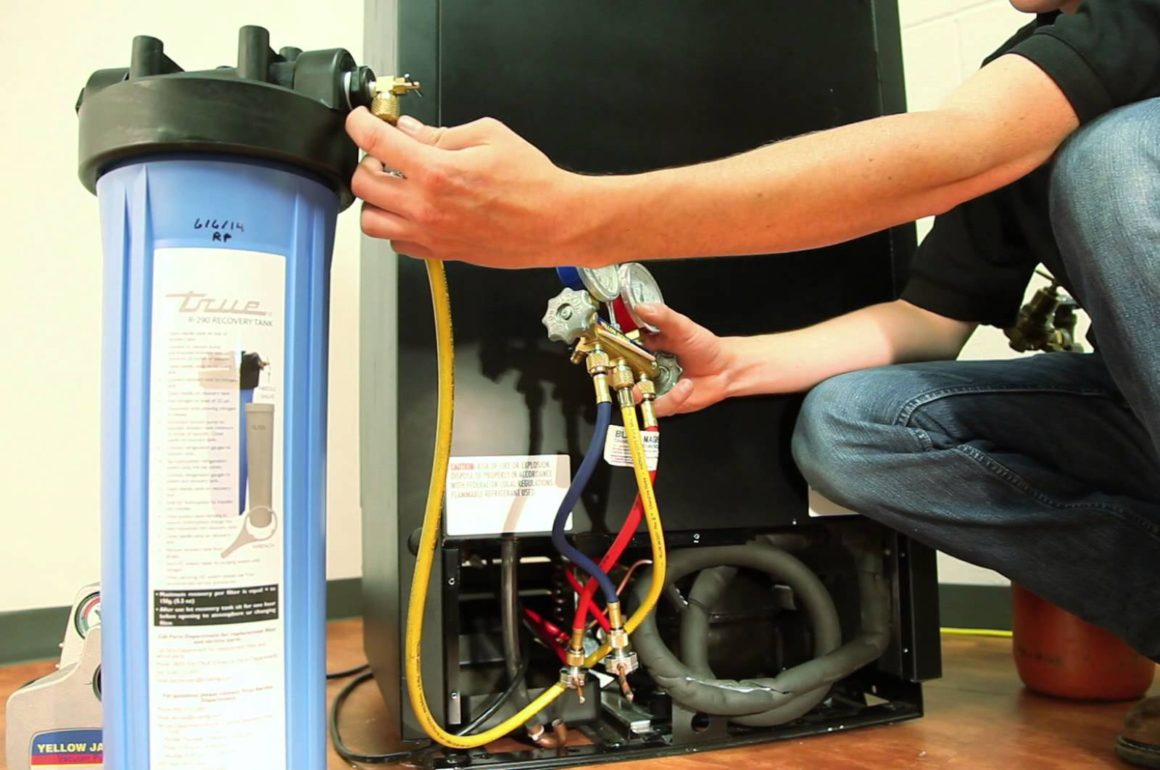
If you own an HVAC system, you should know that the refrigerant in your AC system plays a large role in not only your personal comfort, but in how much you are spending on your utility bills. The coolant is compressed, and at this higher pressure, it is capable of removing heat from the surrounding air. The higher the pressure, the harder the compressor inside the system needs to work. This can lead to larger electricity bills, but this can change, especially if you are using one of the next generation cooling refrigerants. Some of these have been designed as a result of the necessity of removing Freon from the market. This chlorofluorocarbon has been responsible, at least in part, for the destruction of the ozone layer. Additionally, the efficiency of the coolant you are using can contribute to the greenhouse effect. Climate change is a very real issue, one that is affecting us globally, and we can do our small part in resolving all of these issues by replacing our existing coolant. The following information will discuss some of the next generation refrigerants that are used by AC and refrigeration units today.
How Do These Refrigerants Remove Heat
A coolant that is used in any type of refrigeration unit is chemically based. They are designed to absorb heat. For decades, R-22 was considered to be the best refrigerant that you could use, but that all changed years ago once it was determined that it was contributing to the depletion of the ozone layer. Freon, as it is commonly referred to, will be outlawed soon. You will no longer be able to have this in any type of air conditioning unit or refrigeration device that you own. When you replace this, you will need to choose one of the newer refrigerants that have been developed, primarily because of the necessity of eliminating R-22 from these units. The way they are able to extract heat from the surrounding air is that this material is compressed. Inside of an AC unit, for example, the compressor is what causes the heat to be absorbed by these substances. From there, this heat will be dispersed outside of the home or building through the evaporator coil. This will subsequently change this gaseous coolant into its original liquid form through the condenser coil that completes this loop.
Which Next Generation Refrigerants Should You Use?
Once the scientific studies came back, showing that chlorofluorocarbons were destroying the ozone layer, it was time to create alternatives. Many scientists were able to experiment with different types of chemicals, creating the many different options that we have today. In most cases, each of these products is a combination of multiple chemicals, concocted in a perfect balance to get the desired result. For example, R-410A use is hydrofluorocarbon refrigerants, whereas R-404A and R-407C utilize 1,1,1,2-tetrafluoroethane, pentafluoroethane and difluoromethane. However, it was not until www.bluenergy.com/ made TDX 20 that we had a true alternative to Freon. It is capable of mimicking the very efficient functionality of R-22, yet without using chlorofluorocarbons. The absence of CFCs has made this a very popular refrigerant, primarily because of the patented mixture of different chemicals that can create a literal mirror image of Freon. It is not only capable of absorbing heat like Freon, but it also has other benefits.
The Benefits Of Using TDX 20
There are several main reasons to consider using this coolant over all of the others. For many people, it’s all about the money. Of course, it will cost money to purchase and install this into your AC system. The reason that people do it is because of the savings. As mentioned before, the compressor is used to transition the refrigerant into a gas under high pressure. This is how it is able to absorb surrounding heat. However, this does take a substantial amount of energy in the form of electricity, and this is where you will find the savings. The statistics have shown that people have saved up to 25% on the total cost of using the same exact AC system that has TDX 20 installed. In addition to this, you do not have to have a professional do an oil change, and it will also help extend the life of your AC unit. This is because the compressor does not have to operate as it did before. Since this refrigerant is even more efficient than Freon at lower pressures, the compressor will not be overused. This leads to a lower amount of vibration that is common with air conditioning units, and this will lead to more stability for your whole system. Essentially, TDX 20 is going to help your system last longer, and also help you save money on the operating costs.
Different Ways To Have This Installed In Your HVAC System
One way that you can have this done is to get all of the tools and equipment that you need to change this out yourself. However, it is not recommended for the average person to attempt this. What you want to do is find an HVAC-R professional that works directly with refrigeration units. They will have the expertise necessary, plus the tools that are needed, to do this exchange. When R-22 is removed, they must monitor whether or not any of the gas escapes. They must also ensure that all of it is gone. You can have adverse reactions when mixing different coolants together, so much so that it could compromise your entire system. Once this is done, they will put the TDX 20 in your HVAC system, and then they will run a few tests. Over the course of a few months, you will see that the claims of lower operating costs are true, plus you will be doing your part to preserve the environment.
These next generation refrigerants are so much better than what was available just a few decades ago. Many of them are much better than Freon. The ability to extract heat, and produce cold air, will be magnified greatly. In addition to this, there will be fewer CO2 emissions, and a complete elimination of the possibility of your coolant affecting the ozone layer. All of these benefits should motivate people to use one of these next generation coolants in their HVAC system.





Maintenance will indeed be much smoother and quicker if an individual takes all the preventive steps and measures to keep an HVAC system/unit running smoothly and in the best possible shape. Professional maintenance service providers will suggest some valuable tips. So you should hire a professional maintenance company for hvac repair.